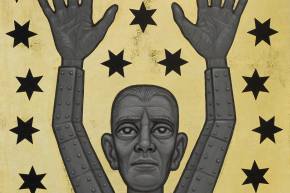The National Gallery Prague holds in its collection a considerable number of Mexican prints which have never or rarely been exhibited. The new twelve-drawer display within the collection display 1939–2021: The End of the Black-and-White Era thus traces the links between Mexico and Czechoslovakia through various encounters, personalities, exhibitions, and acquisitions during the period of the Cold War (1947–1991). Particularly in the 1950s, the socially engaged, figurative, yet imaginative Mexican art – averse to the abstract art championed by the USA – provided artists in the Eastern bloc, including Czechoslovakia, with a dignified alternative to the Soviet model of Socialist Realism. Moreover, thanks to the 1955–1956 touring exhibition of Mexican art, many artists in the socialist world had a first-hand knowledge of contemporary Mexican art.
The new display will be introduced by the curator Rado Ištok, his presentation will be followed by a lecture by the Mexican art historian Fabiola Martínez Rodríguez (Saint Louis University, Madrid) on the 1955–1956 touring exhibition of Mexican art which arrived in Brno and Prague in early 1956. The Mexican delegation donated from the exhibition a painting by Pablo O’Higgins – currently on view in the collection display 1939–2021: The End of the Black-and-White Era. After the lecture, there will be an opportunity to visit the collection display including the new display of Mexican print.
Fabiola Martínez Rodríguez: Proletarians, Peasants, and Revolutionaries: The Enduring Legacies of FNAP’s Touring Exhibition of Mexican Art
In 1955, Mexican artist Diego Rivera’s ‘portable mural’ La Gloriosa Victoria (1954) – a response to the 1954 Guatemalan coup d’état backed by the USA – was for the first time exhibited at an exhibition of Mexican art which toured the Eastern bloc in years 1955–1956. Organized by the Frente Nacional de Artes Plásticas (FNAP), the exhibition toured several countries and cities, including Moscow, Warsaw, and Prague, before concluding in China. Taking place almost in parallel with the first edition of Documenta in Kassel (July–September 1955), one of the key aims of the touring exhibition was to foster solidarity ties and cultural exchanges between Mexico and the countries aligned with the Soviet Union, while at the same time successfully promoting the realism of the Mexican School as one of the most important artistic movements of the 20th century.
Fabiola Martínez Rodríguez, PhD., is the director of the Art History program at Saint Louis University in Madrid. Her current research centres on the study of Inter-American and Transatlantic cultural diplomacy, artistic networks, and the role that Mexican art played in the early Cold War. She has been awarded academic grants by the Terra Foundation for American Art and has been a fellow at the Smithsonian American Art Museum. She is a member of the research group Decentralized Modernities: Art, politics and counterculture in the transatlantic axis from the Cold War to contemporaneity.
The event will take place in English in the Atlas space at the Trade Fair Palace.
Admission: free of charge / Duration: 90 minutes / Meeting point: by the elevator on the first floor of the Trade Fair Palace/ Booking via GoOut
Featrured artwork: Diego Rivera, Woman’s Head, 1955, pencil, paper
The event is held under the auspices of the Embassy of Mexico in the Czech Republic.
Featrured artwork: Diego Rivera, Woman’s Head, 1955, pencil, paper
The event is held under the auspices of the Embassy of Mexico in the Czech Republic.
With the support of the Mexican restaurant Alebrijes Cocina Mexicana.








